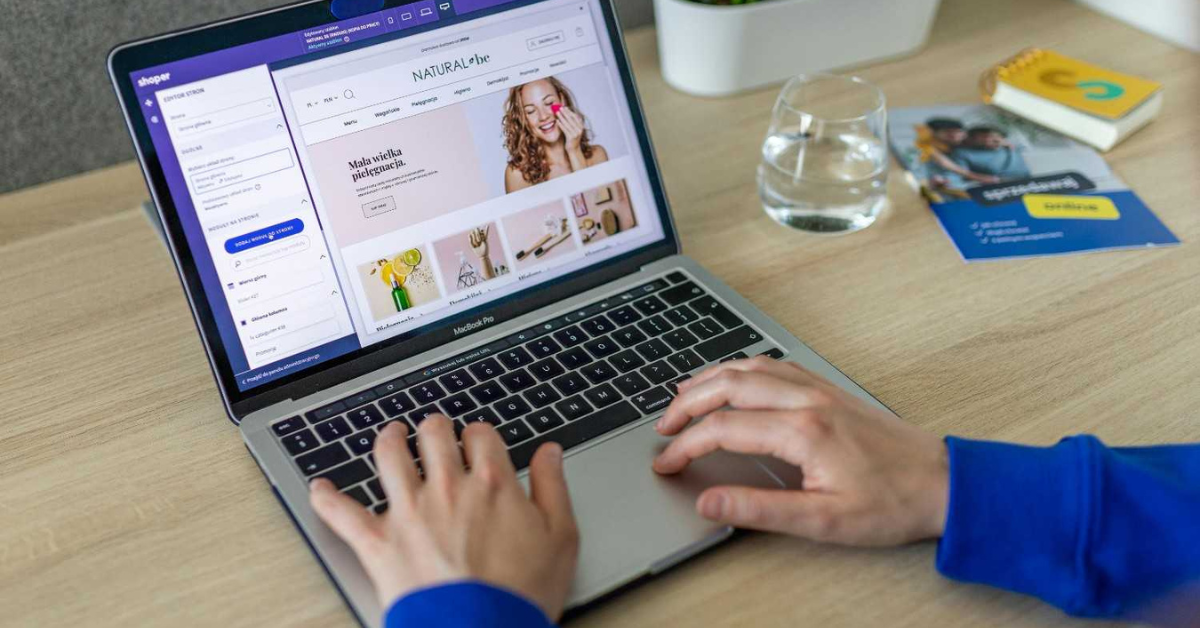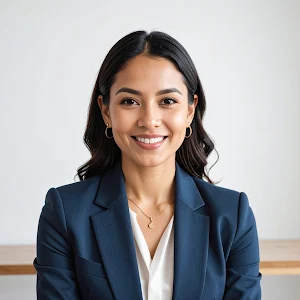Word-of-mouth is a powerful customer acquisition tool. After all, the majority of consumers trust recommendations from their friends and family when considering their purchase decisions.
In fact, 86% of consumers believe in word-of-mouth, making it the most trusted form of marketing. Moreover, 59% of consumers enjoy sharing their positive shopping experiences, which has led to 3.3 billion brand-related conversations in America every day.
These numbers prove that referrals can get more consumers down the sales funnel.
How to leverage the power of word-of-mouth marketing? While word-of-mouth referrals can happen organically, referral programs can speed up the process.
What Is A Referral Program?
Referral marketing works by incentivizing customers or brand advocates.
A brand advocate can get rewarded with freebies, discounts, and cash in exchange for encouraging their friends to make a purchase.
Since brand advocates are usually repeat customers who have prior experience with your products, they are also ideal brand ambassadors. The incentives can also entice them to return to your store regularly and foster customer loyalty.
Consider Maude's referral program which offers brand advocates $5 off their next purchase when friends buy via their invite links. Consequently, friends also get $5 off their first purchase.
Source: https://reallygoodemails.com/emails/get-5-off-for-every-friend-you-refer
How to integrate referral programs into your eCommerce store? As long as you know the right steps, launching referral programs will be fast and easy.
Here are the steps you need to follow.
1. Decide Your Referral Reward
The first step is to determine your referral reward.
Most ecommerce referral programs have a double-sided rewards system that rewards both friends and referred customers. This way, brand advocates will be motivated to recommend the e-commerce store, while friends will be encouraged to make their first purchase.
Incentives can range from discounts, freebies, exclusive offers, and coupons. The ideal incentive for your business will depend on your goals and business model.
Take a look at the pros and cons of the most common referral rewards:/p>
Cash
Everyone is drawn to the prospect of earning money which makes it a compelling incentive. This reward type is highly scalable because brand advocates can earn extra cash by making more referrals. While giving out cash may be costly, it’s ideal for businesses that rely on large one-time purchases such as mattress retailers.
Leesa Mattress’s referral program lets first-time customers get $75 off while brand advocates get $50 for every successful referral.
Source: https://referralmarketingschool.org/program-example/leesa-mattress/
Discounts Or Store Credits
Discounts or store credits are recommended for eCommerce stores that rely on repeat purchases such as beauty or clothing brands. A referred friend may be more inclined to make a first-time purchase if they can get the item at discounted prices. Meanwhile, brand advocates will be motivated to make a shopping trip to use their store credits, plus giving away your discount or store credit can also help you reduce customer churn.
Saje’s referral program rewarded both friends and brand advocates with a 10% discount on their next purchase.
Source: https://reallygoodemails.com/emails/wellness-grows-when-shared
Source: https://reallygoodemails.com/emails/wellness-grows-when-shared
Free Subscription Month
Brands with a subscription-based model can offer a free subscription month so first-time customers can try the product. Consequently, more free months may encourage brand advocates to become dependent on the business and opt for a paid subscription in the long term.
GoodShave offered referred friends 10% off their first subscription box while brand advocates can snag a free month of razors for every successful referral.
Source: https://www.referralcandy.com/blog/subscription-referral-program-examples
Custom Reward
A custom reward that shoppers won’t be able to find anywhere else can motivate them to make a referral. This reward type can range from exclusive products to personalized items such as an autographed book or an exclusive ticket.
Tesla's successful referral program rewarded brand advocates with an invitation to their Gigafactory grand opening party in exchange for five referrals. Meanwhile, referred friends can get an opportunity to get the “founder series” Model X for 10 referrals.
Source: https://www.tesla.com/referral/jake1295?redirect=no
2. Build A Referral Program
Now that you’ve chosen your incentives, the next step is to build a referral program.
Building an ecommerce referral program from the ground up may seem daunting at first. However, there are plenty of referral program tools out there that let you build referral programs within minutes.
Here are some of the referral program tools you can consider:
ReferralCandy: This solution lets you set up your ecommerce referral program within 10 minutes. Upon signing up, you can connect your ecommerce referral program to Shopify, WooCommerce, Magento, and other popular ecommerce platforms.
Extole: This tool is best for enterprise customers. Users will love their seamless rewards engine, built-in advocate segments, easy implementation, and A/B testing capabilities.
3. Create A Referral Program Landing Page
Interested people won’t join your referral program if they don’t know how to start.
A good tip is to create a dedicated landing page where you can redirect interested consumers. Ideally, this should include the reward details, pictures of the referral reward, and a sign-up form. You can also place social sharing buttons so interested customers can easily spread the word on their social media profiles.
Threadbeast’s referral marketing program lets brand advocates earn a free package. In turn, friends can get $50 worth of bonus items featured on the right image.
To get started, brand advocates simply enter their email addresses to access their personalized sharing page. They can also share on Instagram to maximize their results.
Source: https://www.threadbeast.com/refer
This page can also include a FAQs page or terms and conditions so parties involved are guaranteed to get their promised incentives.
For instance, the Threadbeast referral landing page lets brand advocates know that their offer is available for a limited time only and there is no limit to the number of referrals they can earn.
Source: https://www.threadbeast.com/refer
4. Ensure Smooth Integration
At this stage, you’re probably ready to launch your referral programs.
Before you go all-out, ensure that your referral program properly integrates with your marketing, eCommerce, and communication tools. If your ecommerce store has a dedicated mobile app, integrate your referral programs so that customers will enjoy faster processing.
Test your referral program beforehand to ensure that it’s easy to use and that customers won’t experience any hurdles along the way.
You should also train your marketing and sales team to use the referral programs. For sales teams, this means they’ll be able to answer customer inquiries and concisely explain solutions. In contrast, marketing teams will be able to create better promotional materials to guide customers through the referral process.
5. Promote Your Referral Program
Nobody will sign up for your own referral program if you don’t put enough effort into marketing.
Even after creating an ecommerce referral program, consider launching social media or email marketing campaigns to boost sign-ups.
Here are some marketing ideas to consider:
- Create two lists of ideal referrals:
1) Existing leads and customers
2) New leads (use email finder tools to find them)
- Send a referral email
- Include referral incentives in your post-purchase workflow
Ecommerce stores with a huge email list can simply send a referral email en masse to announce their launch. Businesses without a huge email list can send cold email pitches to niche influencers (to form partnerships) or even directly to their target audience. Hunter’s directory of email templates is a great help if you’re looking for inspiration.
Ideally, you should keep your referral email short and simple. Write a slogan that makes it easy to get the gist of your referral program such as, “Give $5, Get $5”. You can also include a CTA on your referral marketing program landing page so interested customers can get more information.
Outdoor Voices’ referral email is straight to the point with the words, "Here's $20". At the bottom of the page, they get a simple explanation of the referral programs and the option to click the visible call-to-action (CTAs) to get their code.
Source: https://reallygoodemails.com/emails/smiles-davis-sent-you-20
Launch A Social Media Campaign
Announce your referral program on your social media pages to boost awareness. Alternatively, you can also make sponsored posts announcing your referral program to increase sign-ups and improve customer acquisition.
Elevated Lashes' Instagram post lets viewers learn about their refer-a-friend program.
Source: https://www.instagram.com/p/CGDdQ4xHjg6/?utm_source=ig_web_copy_link
Create A Website Banner
A website banner on your homepage is also an effective way to announce the launch of your referral program to your customer community.
For instance, Toybox placed a large referral program website banner on its homepage.
Source: https://blog.prototypr.io/ux-design-website-redesign-for-referral-program-promotion-b39ede3d9c82
Make A Referral Program Pop-Up
A referral program pop-up may be able to encourage first-time visitors to try out your products. After all, the possibility of receiving a free product, subscription month, or perks by referring their friends may be an effective motivator.
In addition, it can also encourage website visitors to refer their friends and make a repeat purchase upon receiving their store credits.
Julep's referral program pop-up lets customers know that they can get $15 credit for every bestie who joins.
Source: https://www.referralcandy.com/blog/47-referral-programs/
Ready To Launch Your Referral Program?
Successful referral programs can have a huge impact on your customer acquisition process.
People are more likely to trust recommendations from their friends and family, rather than a sponsored ad. As a result, getting your customers to act as brand ambassadors can greatly expand your customer base. Plus, the incentives can also encourage your current customers to remain loyal to your brand.
To get started, all you need to do is choose a referral incentive, use a referral software solution, and promote your referral program in your available marketing channels.
How will you design and set up a referral program for your ecommerce store? Let us know in the comments.
About The Author
Raul Galera
Raul Galera is the Partner Manager at ReferralCandy and CandyBar, two tools helping small and medium businesses run customer referral and loyalty programs. He’s been working in the tech sector for the past seven years and regularly writes about marketing, ecommerce and tech.




